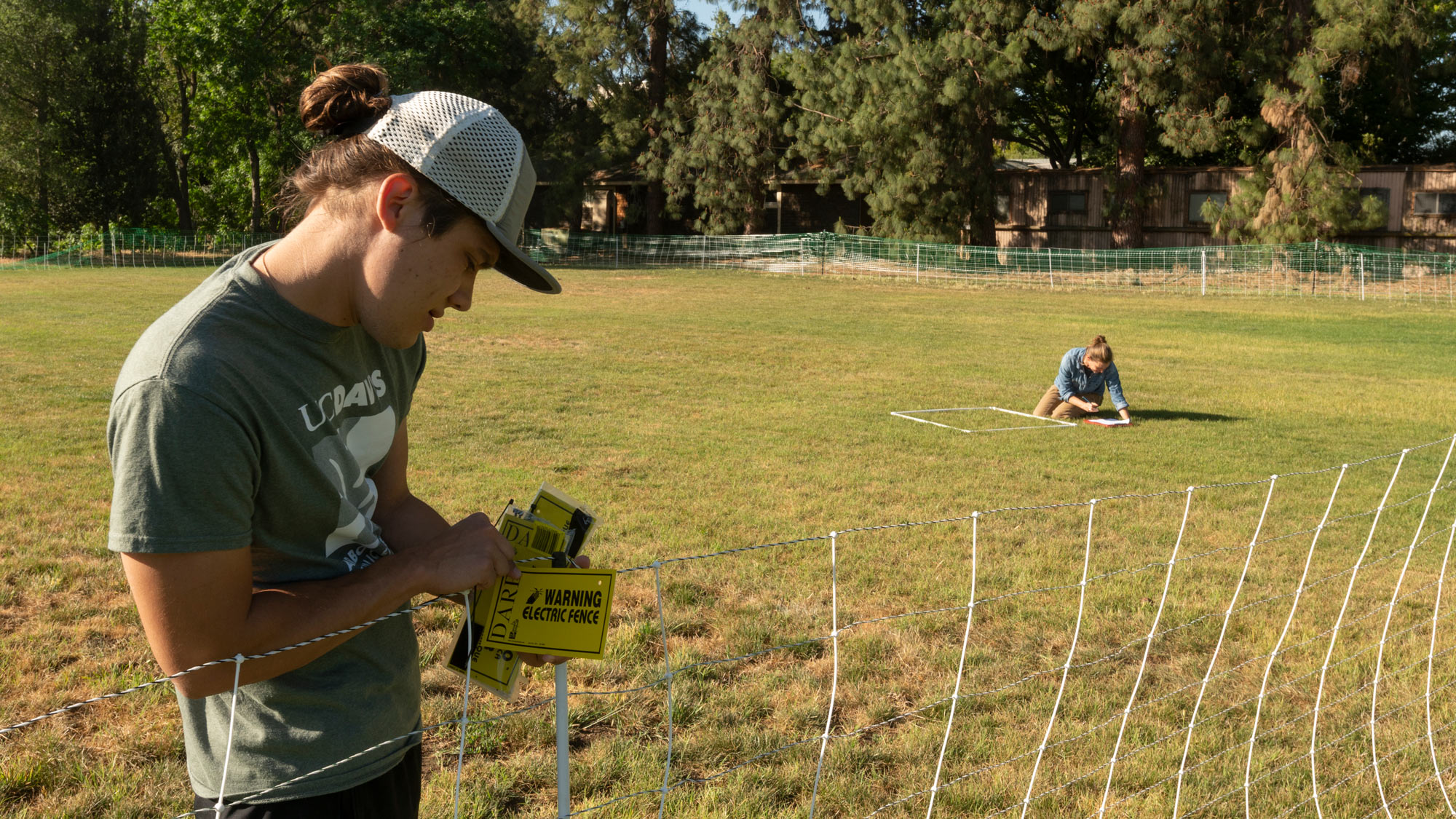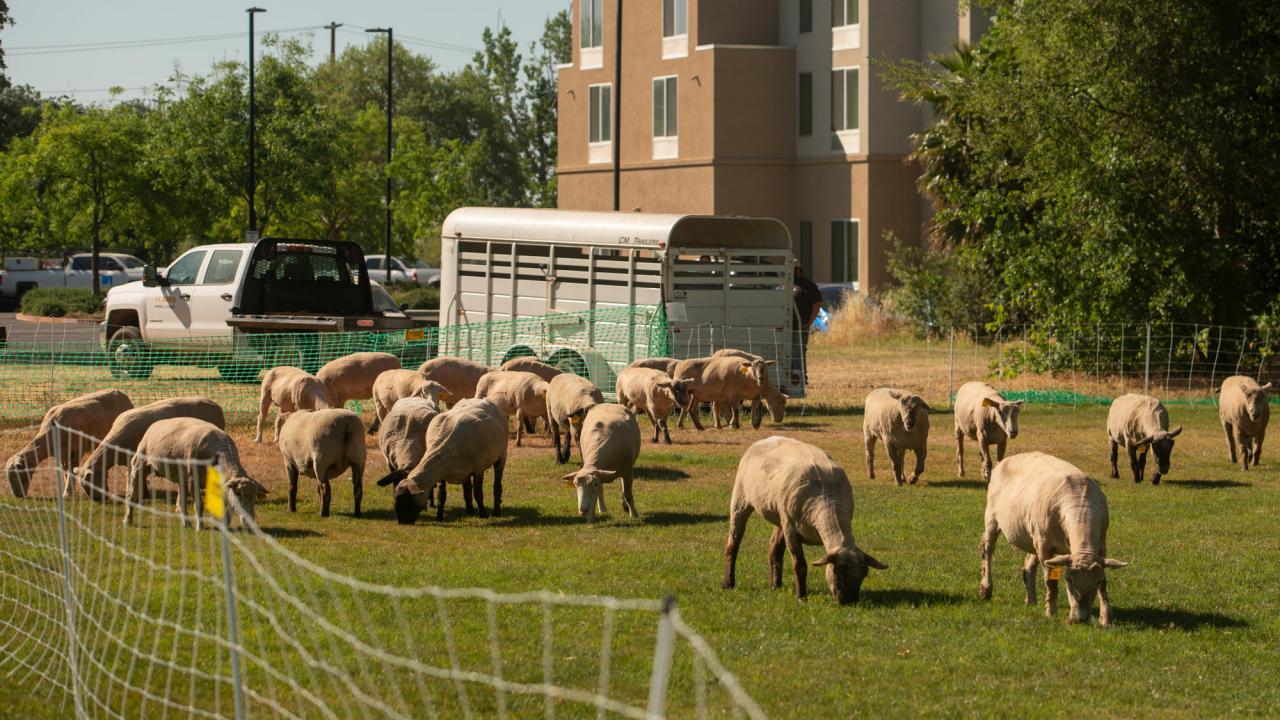Quick Summary
- Experiment compares natural vs. conventional landscaping
- Come out to observe — and bring your knitting (or felting)!
- Researchers will measure grass length, soil compaction and more
Sheep have been grazing the UC Davis campus during the summer and this fall in an academic experiment to see if they can eat weeds and grass, fertilize and control pests as well as or better than using conventional landscaping methods.
This week will be the last chance to see them for a while — and, if you're a knitter, well, this is your opportunity to see wool-in-the-making! More on that later.
The breeding ewes will be on Solano Field from 9 a.m. to 3 p.m. Wednesday through Friday (Oct. 20-22). They will then take a break for the rest of the fall and winter season as wet weather (and mud) sets in, said A. Haven Kiers, assistant professor of landscape architecture and director of the project. They will winter in their barns and fields elsewhere on campus.
The project began back in May and is part of a multidisciplinary study to explore the possibilities of improving the living and working environments for people as they intermingle with nature — and it may save the campus money and resources at the same time.

The final October grazing event will have a knitting and felting theme. Invitations have been extended to local craftspeople. “Folks are encouraged to bring their knitting with them so they can knit while they watch the sheep — the ultimate meditative experience,” said Kiers. Felting wool and tools will be available for people who want to learn how to felt, as well, she said.
After the sheep leave on the 22nd, the researchers on this project will take measurements on soil fertilization and compaction, as well as plant biodiversity and grass length. Their goal is to analyze the data from the six-month period and write up their findings.
Read more about the sheep mowing project in this previous article.
Media Resources
Hayley Morris in an intern in News and Media Relations, Office of Strategic Communications.
